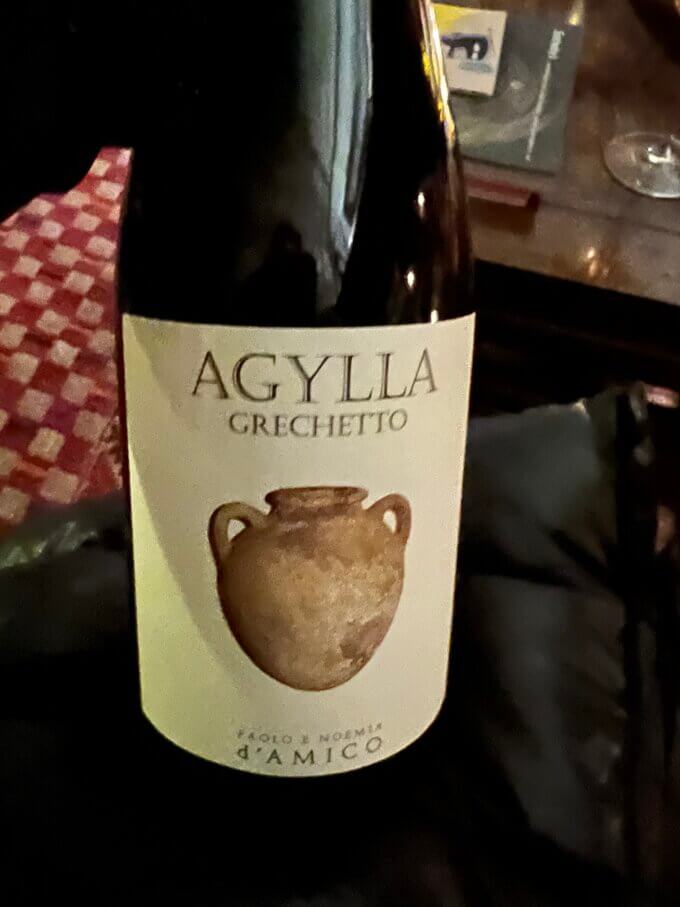Be social! Share the fun!
Diversity of the Orvieto DOC
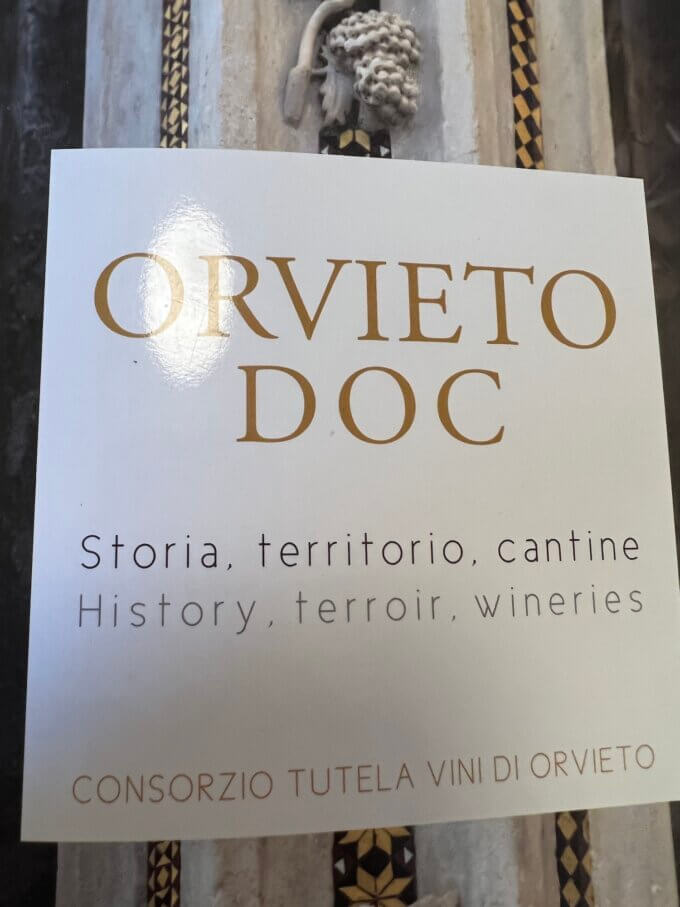
Orvieto is a hilltop region in Umbria. Historically it’s famous for its white wine called “Sun in a Bottle” by the ancient Romans.
The ancient Etruscans carved out cellar-like caves from the volcanic soils (tufa, similar to France’s Loire Valley) to produce and store the sweet white wine popular during that period.
This article will discuss the wines of the region and focus on three diverse producers introduced by the Orvieto Wine Consortium
The Orvieto Wine Dinner
Producers of Orvieto met me at “Restaurant Charlie” to introduce their wine and their culture.
Among them was Chiara Custodi of the Custodi Winery, Corrado Botti of Cantina Le Velette (both featured in this article, Paolo Nardo of the large cooperative Bigi Winery, and Massimiliano Pasquini of Castello Della Sala, winemaker at this prestigious Antinori property.
Each of the producers brought a bottle (or more) of their wine and told me about the winery and their region.
Diversity within the Orvieto DOC
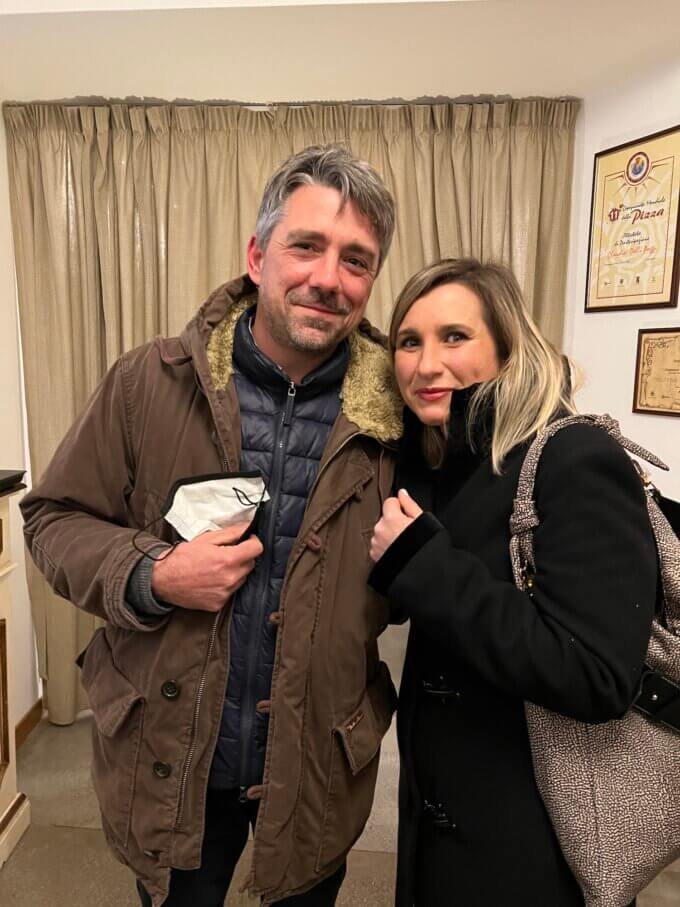
Bigi winery, Orvieto’s most traditional cellar, boasts fame for its production of white wines and Sangiovese reds. Winemaker Paolo Nardo told me a bit about himself and his work. He studied Viticulture and Oenology at the Faculty of Agriculture of the University of Udine. Then he trained in the best wineries from Sicily to Tuscany, gaining significant experience in the grape-growing and processing for white and sparkling wines, as well as red wines.
Massimiliano Pasquini of Castello Della Sala, winemaker at this prestigious Antinori property, spoke about his work at Antinori. Then he paired wines he brought with the many dishes accompanying the meal.
Orvieto Wine Laws
White Orvieto and Orvieto Classico DOC wines are mostly a blend of Grechetto and Trebbiano grapes. Blended red wine varietal reds fall under the Rosso Orvietano DOC.
Though I expected all the wines to be delicious and expressive of the famed tufa soil, the semi-sweet wine called Muffa Nobile delighted me with its deep gold, almost orange color and complexity of aroma and taste. Though typically served with dessert, this wine could pair with foie gras and even scallops.
Individual Winery Visits
The three winery visits below represent the diversity of Orvieto producers.
Cantina Custodi
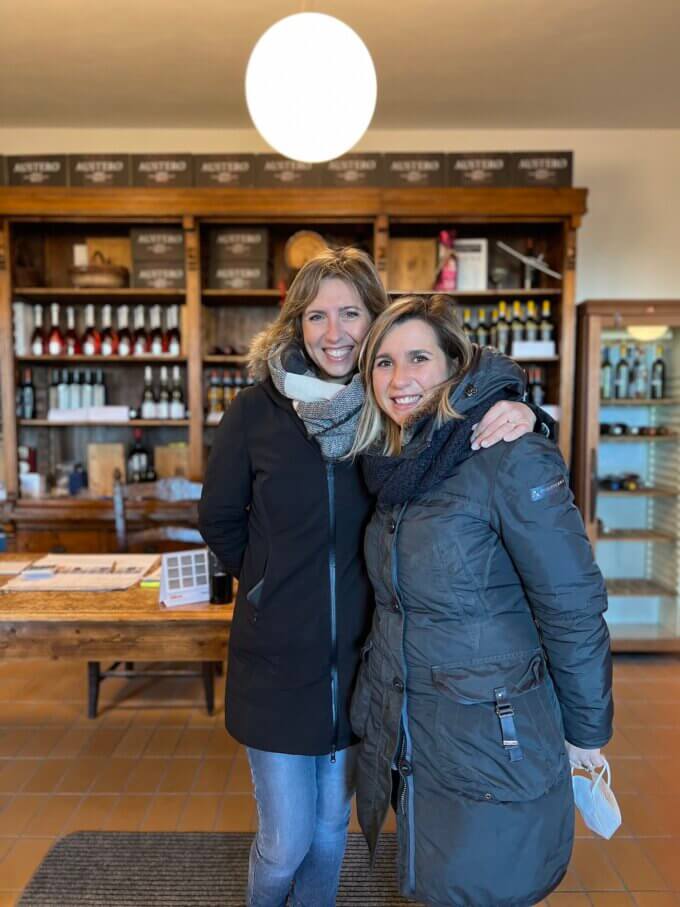
Chiara Custodi, an owner of Cantina Custodi, blonde and petite, had been the one to meet me at my hotel the night before and escort me the short distance to Restaurant Charlie.
The next morning, I arrived at the beautiful winery she shares with her sister Laura. Built in 2003, the winery overlooks beautifully maintained vineyards and is filled with new, state-of-the-art, and expensive looking equipment.
As an added bonus, it faces the Cliff and the Cathedral of the city of Orvieto, echoed in the cobbled stones and the beam structures for the roof, making a direct connection with the city.
Half of their 37 acres is dedicated for the production of ”Orvieto Classico” wine, the rest is used to produce ”Sangiovese” and other highly prestigious non autochtonous vines such as: Chardonnay, Sauvignon Blanc, Merlot, Cabernet Sauvignon and Cabernet Franc which all derive from a careful selection of clones.

The view and interior design could grace any architecture magazine, rendering it a big hit with the wine tourism crowd. Above the reception area guests will find a large , comfortably furnished room perfect for tastings, lunches, and dinners – especially with the outdoor terraces. The packaging of their wine is impressive as well, with their label modeled after an important artwork in the historic Duomo di Orvieto
I tasted through their portfolio of their delicious five wines, a few which I had admired at dinner the night before. The sisters sell internationally and have been selected for the prestigious Silver Seas cruise line.
Tenuta Le Velette
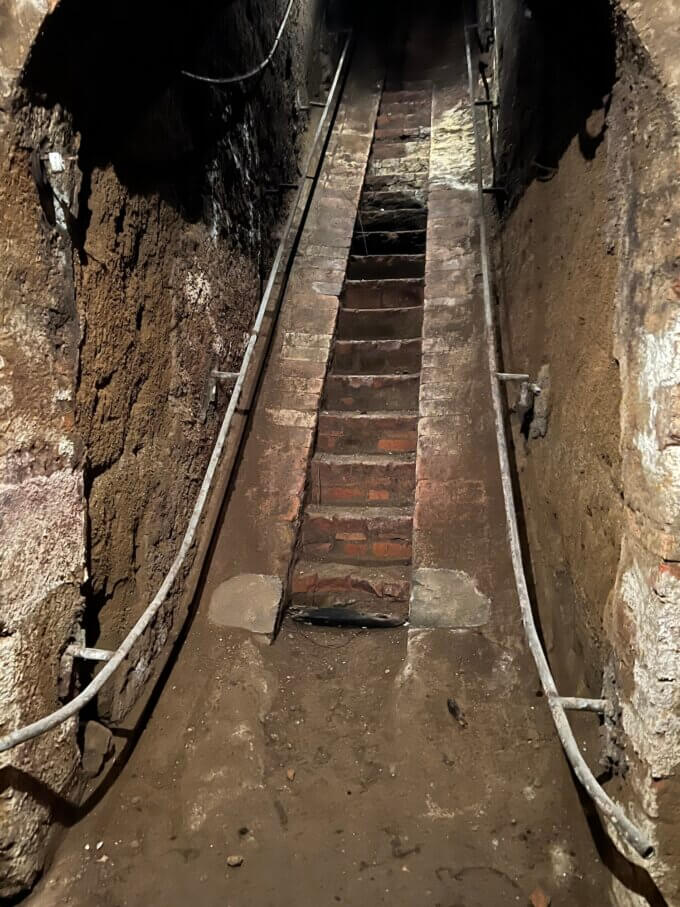
Le Velette History
The Etruscans were the first to use the volcanic land to create deep cellars with cool temperatures perfect for the fermentation of white wine.
In the tunnels of Le Velette one can also find traces of the Roman period, and Middle ages. Later, Le Velette became the property of a noble family, then the churc. It finally bought in 1877 by the ancestors of Corrado Bottai, present owner with his family.
In 1967, the Bottai family built modern cellars. This made it possible to bottle and ship the wine to increasingly distant markets.
After telling me the story of the winery, Mr. Bottai treated me to a tasting of the wines and local foods in the modern-looking tasting room and gift shop.
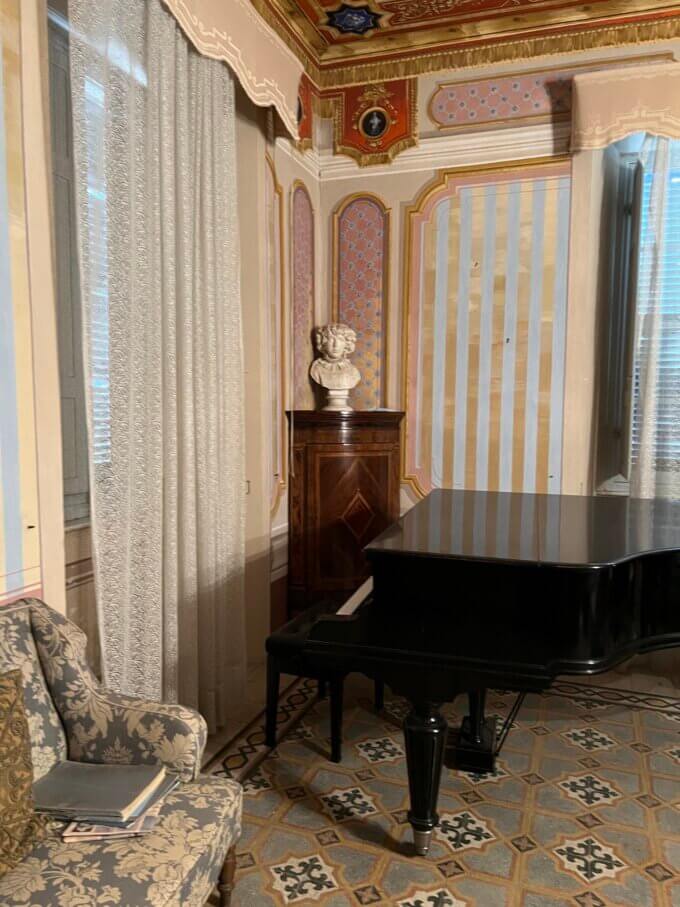
Then, he showed me the various rooms of the mansion, many with period furniture and frescoes. The maturation cellar was most interesting as it had once been an Etruscan necropolis.
A delightful visit to a classic, historic Orvieto winery.
Paolo E Noemi D’Amico
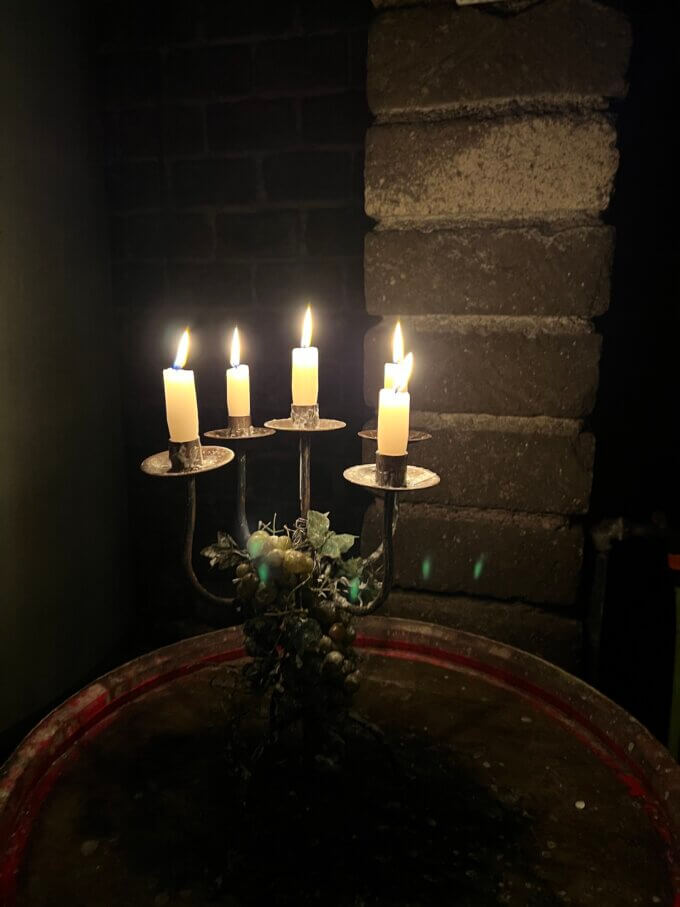
Paolo E Noemi D’Amico, owners of this gorgeous mansion and winery bought this estate to showcase the treasures of Umbria.
The mansion, Villa Tirrena, originated from a sixteenth-century settlement in Italy. The D’Amico family restored it, transforming it into a wine resort where the rich and famous stay, play, and drink wine.
Upon entering the winery, one feels as if one is on a movie set. Actual candles are lit all over the winery, giving it the ambiance of a sacred church.
They clearly made the delicious wines with tender, loving care. Some age in fine French oak, others in tall amphora standing in an orderly fashion among the oak barrels. You can see pictures of how gorgeous this looks when set up for weddings and celebrations here.
